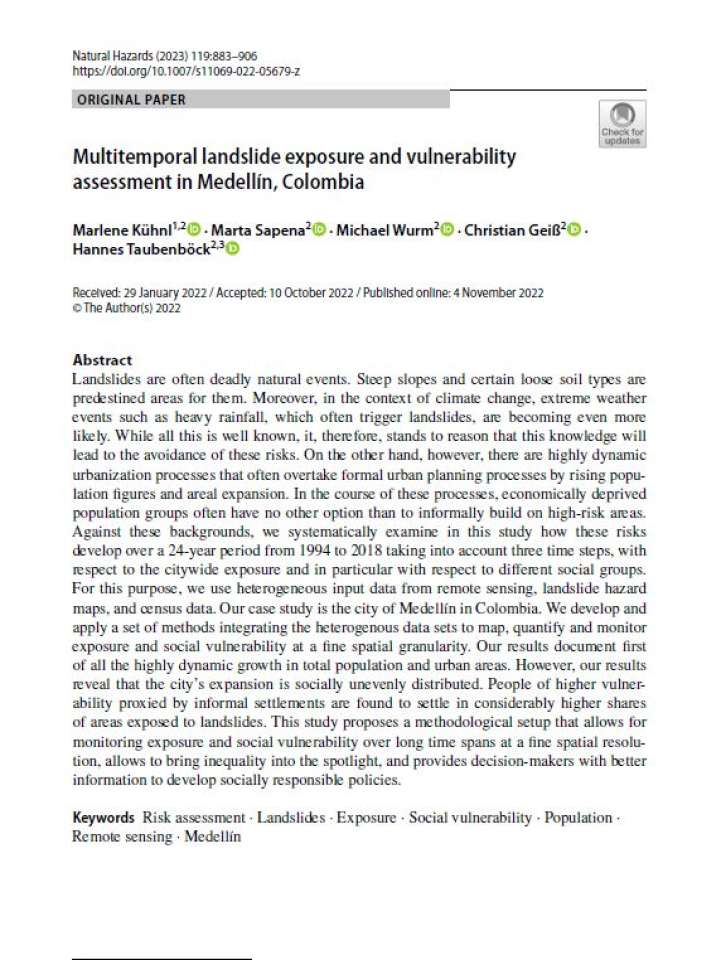Multitemporal landslide exposure and vulnerability assessment in Medellín, Colombia
The authors systematically examine in this study how landslide risks develop over a 24-year period from 1994 to 2018 taking into account three time steps, with respect to the citywide exposure and in particular with respect to different social groups. For this purpose, the researchers use heterogeneous input data from remote sensing, landslide hazard maps, and census data. Our case study is the city of Medellín in Colombia. We develop and apply a set of methods integrating the heterogenous data sets to map, quantify and monitor exposure and social vulnerability at a fine spatial granularity.
the results document first of all the highly dynamic growth in total population and urban areas. However, the results reveal that the city's expansion is socially unevenly distributed. People of higher vulnerability proxied by informal settlements are found to settle in considerably higher shares of areas exposed to landslides. This study proposes a methodological setup that allows for monitoring exposure and social vulnerability over long time spans at a fine spatial resolution, allows to bring inequality into the spotlight, and provides decision-makers with better information to develop socially responsible policies.
Explore further
